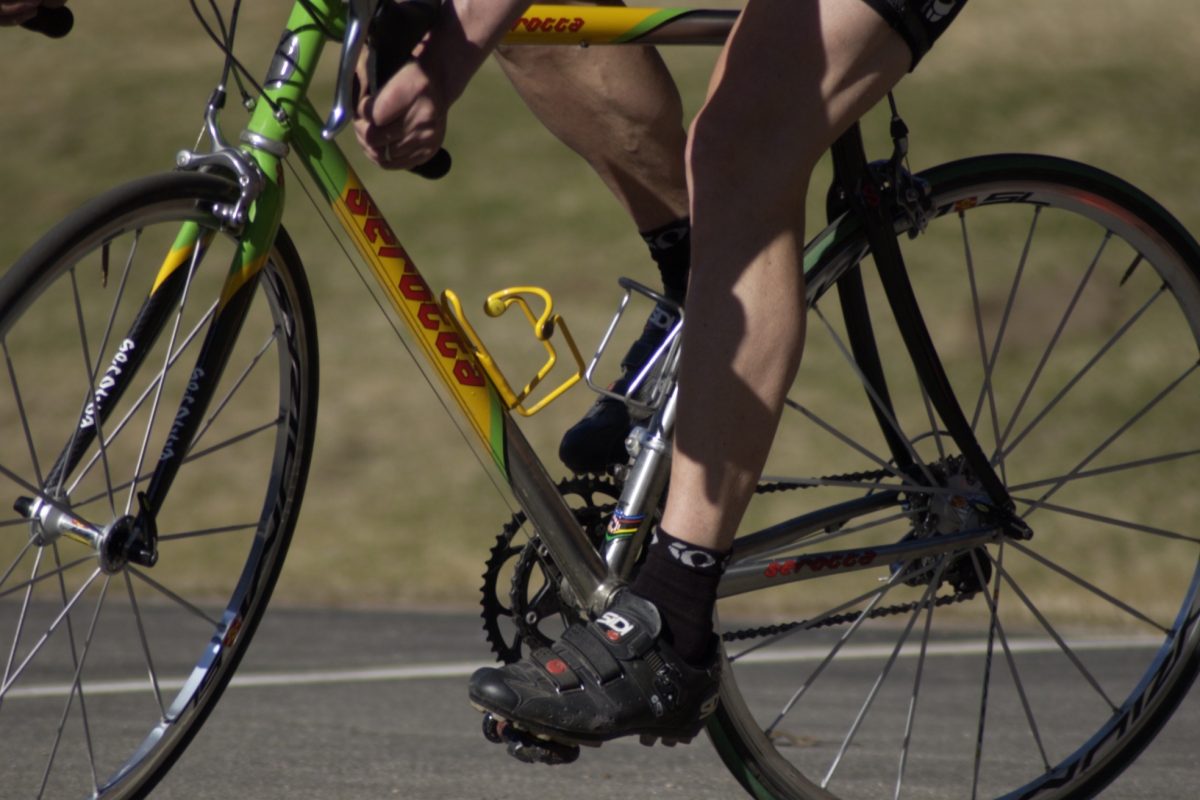
This Saturday, Jan. 20, the Masters World Cup will open in Minneapolis, Minnesota —the first time it has been in the U.S. in 10 years. Of course, the word “master” could be considered a euphemism for “old skier.” However, age doesn’t have to come with a decline in performance. Ask 65 year-old Brad Johnson, of Pioneer Midwest in Osseo, Minnesota. He raced his first American Birkebeiner when he was 57, and he’s done every one since.
As an employee of the Anoka-Hennepin school district before his retirement in 2009, Johnson acknowledges it was hard to teach, coach (track and nordic) and race. He was able to stay fit, “but you don’t get training in. I’d get home at 7-7:30, I’m not going out for an hour and a half because I don’t have anything left in the tank. Some coaches successfully do that.” He admits he was not one of them.
Johnson’s one of the “older-guy contingent” of Pioneer Midwest’s ski team, an “emeritus team of older guys that ski in Pioneer stuff.” Despite his late start to racing, he has made the Birkie’s 25% Club, with a top finish of 3:56 for the 54-kilometer classic, and he also completed the original Norwegian Birkebeiner. He credits his fitness to focusing on the basics: duration, frequency, and intensity of training.
He feels the main mistake masters skiers make is a focus on duration, not emphasizing frequency and intensity enough. “Those two- and three-hour skis can cause more harm than good,” Johnson said, citing a breakdown of technique as one fatigues, opening them up to injury. And, if you get too tired, you become more susceptible to illness.
“Illness and injury are the two things that shut us [masters] down more than anything,” he said.
Johnson typically skis about four days a week, with one core and weight-training session per week. He asserts the significant loss of muscle mass as one ages is central to maintaining some sort of strength regimen.
“You hit your 60s and it can go downhill real fast … use it or lose it, basically,” he said.
Johnson rests at least one day a week, but admits it can be as many as three, depending on weather.
Each workout, he focuses on one aspect of technique in conjunction with intensity, maintaining three aspects of fitness are integral to any workout: aerobic capacity, lactate threshold, and economy — the last an advantage of the master skier.
“We’ve done this [skiing] over and over again. We’ve become more efficient,” he said. “We’ve got a little bit more guile than some of these younger skiers.”
He calls it “skiing lazy”: saving energy as much as possible, using good form and drafting, something he’s done to 30-something skiers that “save[s] a lot of energy!”
Johnson incorporates Heart Rate Variability training into his workouts to help him get the best workout for any given day, but admits that is just one small piece of training. He feels one of the best things for the master skier is intervals — the number being based on how one feels; the use of a heart-rate monitor is imperative:
“We think we know where our heart rate is — we don’t have a clue, unless you’re wearing a monitor,” he said.
In Johnson’s opinion, a person should know their heart rate zones (1-5) in order to maximize the benefits of any workout.
Additionally, acknowledging that age can come with physical changes, Johnson suggests getting the OK from your doctor. “Assuming they know what they’re talking about, which isn’t always the case, and having a doctor that understand sports medicine and aging athletes,” he said. “That’s not the most common physician to find, but at the very least [one needs to establish], ‘is my heart in decent enough shape to go do this?’ ”
As Johnson is most definitely in “decent enough shape,” and showing no signs of slowing down, it would appear there is at least some truth in the old axiom: Old age and treachery will overcome youth and agility.
The Workout: Basic intervals
One of Johnson’s essential workouts is basic intervals, done on a variety of terrain, based on the technique he’s focusing on for the day. So, pick your “skill drill” (hills, double poling, etc.), and get ready for some intensity.
Warmup: Base on how you’re feeling for the day. Minimum is 5 minutes, but up to 20-30 minutes. Get into Zone 2; if you’re there, but don’t feel “ready to hit it” take more time until you do.
Interval Session: 8-12 intervals of 2-4 minutes in upper Zone 3 to Zone 4, in anaerobic threshold. Between intervals, ski easy until your heart rate is back into Zone 1. As soon as you are back in Zone 1, go into the next interval.
Be sure to note how long recovery takes for the first three or four intervals. The number of intervals you do is based on how quickly you are recovering; once your recovery time significantly increases, you are done. Johnson notes a recovery time increase of 30-45 seconds as significant.
For example: if it takes you 90-120 seconds to recover between the first few intervals, but by interval 9, it is taking you 150 seconds or longer, you are finished. By that point, Johnson says you have depleted yourself, technique can fall apart, and you can do more harm than good.
Warm down: (a.k.a. cool down) An easy ski back to the chalet — about 15-20 minutes, keeping the heart rate no higher than Zone 2.



